Browse Primary Sources
Locate primary sources, including images, objects, media, and texts. Annotations by scholars contextualize sources.

Grid Map of Judicial Independence
Comparisons across world history can be productive if done with care. For example, the Constitute Project from the University of Texas-Austin has created a database of world constitutions that includes a feature for comparing various nations' constitutions to look for similarities and differences. The Constitute website lets users pin and export relevant passages for comparison.
Excerpt from the Asokavadana
The Asokavadana is a text written in Sanskrit that brings together oral traditions about Ashoka’s reign that did not die out when the Mauryan Empire collapsed, but spread throughout India
and beyond its borders. This section relates an incident from Ashoka’s life after he converted to Buddhism. Oral traditions about Ashoka grew up without reference to his actual edicts; people

Ashokan Pillar with a Single-Lion Capital at Vaishali, India
This is a photograph of one of the Ashokan pillars, topped with a single lion. (Other pillars are topped with three lions, an emblem that is now on the state seal of India and Indian coins,
or lions and the Buddhist wheel of law, an emblem reproduced on India’s flag.) Each of these pillars—more than thirty have been discovered—was transported hundreds of miles from
Selections from Ashoka, Rock and Pillar Edicts
The “rock and pillar edicts,” inscriptions that King Ashoka ordered carved in stone on large rocks in prominent places or on tall pillars that he had erected for this purpose, are the best record we have of Ashoka’s reign. The edicts are found in a number of different locations
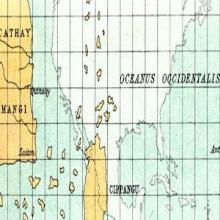
From John Bartholomew, Literary and historical atlas of America
This unusual map appeared in a 1911 atlas of America by John George Bartholomew, a prestigious Scottish cartographer and geographer. In this map Bartholomew dramatized the provincialism of European cartography three centuries earlier. He did so by superimposing the Americas on a reconstruction of a 1474 map of Italian cartographer Paolo Toscanelli.
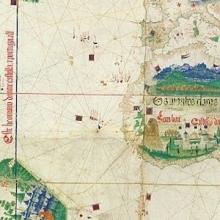
Cantino planisphere
The famous Cantino planisphere was made in 1502 by an anonymous Portuguese official at the request of Alberto Cantino, an Italian agent in Lisbon of Ercole d’Este, Duke of Ferrara. It is the earliest map showing the recent discoveries by the explorer Vasco da Gama, who, using a new portable version of astronomers’ astrolabe, charted Brazil, Newfoundland, Greenland, Africa, and India.
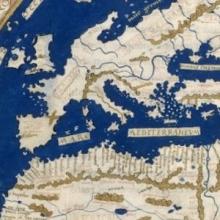
World map by Henricus Martellus
Henricus Martellus was a German geographer and cartographer who worked in the Italian city of Florence from 1480 to 1496. His book of 1490, Insularium Illustratum ("Illustrated Book of Islands"), in which this map appeared, was widely circulated for two reasons.
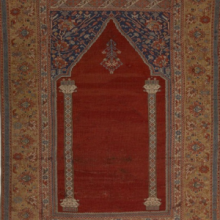
Early Modern Ottoman Carpet at the Walters Art Museum
This carpet is a specific type of carpet woven in the Islamic world called a sajjadah or prayer rug. Typically, these carpets will have one or more arches decorating its center field representing early mosque architecture or the mihrab a niche in a wall that directs the worshipper towards the holy site of Mecca.
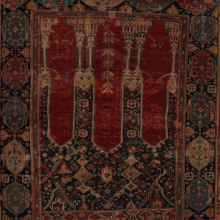
Islamic Carpet made in Ottoman Turkey at The Metropolitan Museum of Art
This carpet is a specific type of carpet woven in the Islamic world called a sajjadah or prayer rug. Typically, these carpets will have one or more arches decorating its center field representing early mosque architecture or the mihrab a niche in a wall that directs the worshipper towards the holy site of Mecca.
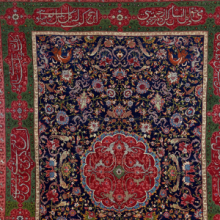
Islamic Carpet made in Safavid Iran
This carpet called the Qazvin Carpet (also known as the "Salting Carpet") was made in late-sixteenth century Safavid Iran likely in a royal atelier.
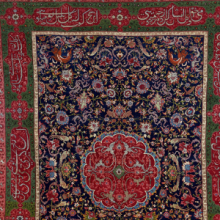
Islamic Carpets
These three carpets made in the period between the 16th and 18th centuries show two distinct types of carpets produced in the Islamic World for particular culture-specific uses.

Brooklyn's Panorama Competition
The Panorama is one of the biggest events for steel bands in Brooklyn. Originating in Trinidad, it is tied to the Carnival season and is best understood as a music competition embedded in a series of festive activities and performances.
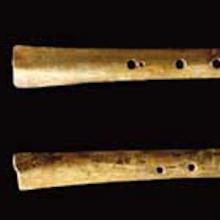
Neolithic Bone Flutes
The use of musical instruments, such as clay flutes and bone whistles, has been traced back to the earliest documented historical period in China (Shang dynasty, 1765-1121 BCE).

Javanese Gamelan
Here, a Javanese gamelan (court orchestra) performs at a traditional wedding ceremony in Indonesia. A gamelan relies on intricate music played on expensive, exquisite bronze instruments to convey their community's values, ideals, and self-image. What the gamelan performs depends on context. In a private, intimate court setting, the gamelan displays the elegance and largesse of its patrons.
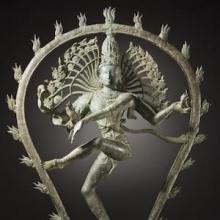
Shiva as the Lord of Dance
This manifestation of the Hindu god Shiva depicts the deity holding a small drum, which symbolizes the audible space that fills the universe, the sound of creative energy. Here, rhythm, drum, and music are manifestations of fundamental Hindu beliefs. At concerts of Indian music, audiences listen to drummers raptly and follow their complex rhythms in cycles.
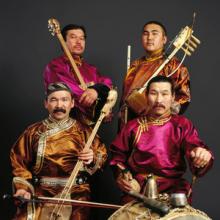
Huun-Huur-Tu Throat Singers
Huun-Huur-Tu is a musical group from Tuva, which is situated along the Mongolia-Russia border, that is known for their traditional throat singing. Throat singing is when performers sing both a note and its overtones simultaneously, resulting in a rich and complex timbre, or the sound quality and texture of instruments and voices performing the music.

Javanese Shadow Puppets
Music and dramatized storytelling are the tools of memory in places like the Indonesian island of Java. Here, a traditional Wayang, or Javanese, performance depicts Hindu epics or popular cultural legends through the use of leather puppets whose shadow is cast upon a thin fabric. Traditionally, the performance is backed by a Gamelan orchestra and usually lasts all night.
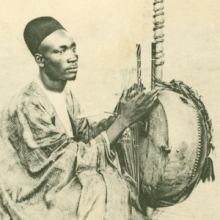
The Griots of West Africa
Music has served as a language of memory in many cultures around the world. In West Africa, a Griot, or Jali, is part of a special, hereditary caste of individuals charged with knowing and retelling the stories and histories of the local people.
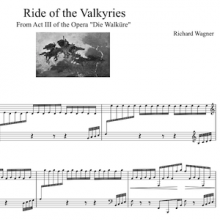
Wagner's Ride of the Valkyrie
Although it is important to take into account an artist's intentions and hopes for new music, it is equally important to realize that music is often appropriated - meaning that it is used by others in ways that the artist did not intend. Take for example Richard Wagner's famous musical drama The Valkyrie.
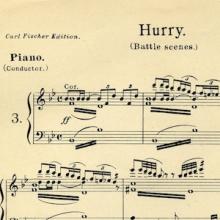
Silent Film Sheet Music
Music permeates cultures around the world. From movies, sporting events, funerals, weddings, and religious services, it is hard to imagine life without music in the background. Take, for example, this sheet music from the early twentieth century.